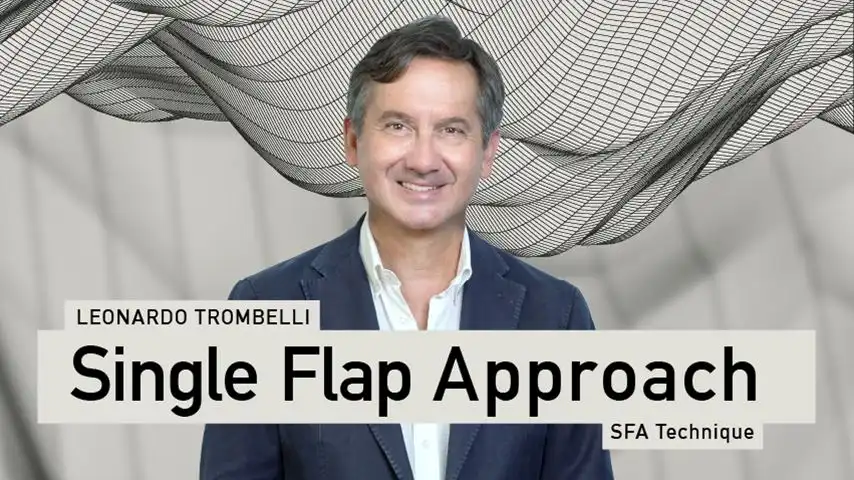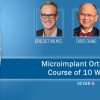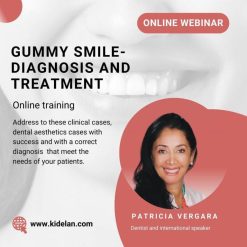Osteocom Single Flap Approach
$50,00
This Product is shared via google drive download link, So please share your correct Gmail id while placing the order .Please note that there are no CME points or certificate associated with this course Samples for Courses Can be found here : Free Samples Here!
Include: 10 videos + 1 pdf, size: 6.42 GB
Osteocom Single Flap Approach
Include: 10 videos + 1 pdf, size: 6.42 GB
Target Audience: all specialists willing to learn more about simplified periodontal regeneration techniques for the treatment of infrabony defects
Information:
- Quality: Full HD video
- Language: english
- Length: 5 hours and 8 minutes on demand
- Number of videos: 10 lectures
- Simplified periodontal regeneration techniques for the treatment of infrabony defects
osteocom brings you the exclusive video course by Prof. Leonardo Trombelli, international expert in periodontology and speaker at major association congresses worldwide.
The treatment of deep infraosseous lesions is still perceived as a challenging task for periodontists. The difficulties related to flap design, suture technique choice, and the choice of the appropriate regenerative technique have led to the widespread perception of regenerative treatment as a technically complex and expensive procedure.
The purpose of this video course is precisely to dispel this myth, presenting all the necessary steps to successfully implement the Single Flap Approach (SFA) technique: a simplified approach to infraosseous regeneration capable of ensuring both the success of the treatment outcome and the simplification of clinical procedures.
What is the Single Flap Approach and how is it done?
The Single Flap Approach can be described as the elevation of a single vestibular or lingual/palatine flap, allowing to leave the tissues on the opposite side intact.
The SFA technique has repeatedly proven to be more effective – in terms of surgical access as well as in combination with regenerative materials – compared to traditional papilla preservation techniques. Recently it was shown how the use of the enamel matrix derivative leads to better clinical performance when combined with SFA than any other flap design. This technique can be used successfully in 90% of the clinical scenarios involving deep intrabony defects, regardless of severity, number of residual walls and position.
The improvement in the clinical conditions of a deep infraosseous lesion that can be achieved with SFA can be summed up as:
- substantial gain of clinical attachment
- easier bone filling and better histological outcome
- reduction of the probing depth to a easy to maintain condition
- limited post-operative recession
The course includes:
- 10 theoretical lectures
- Several surgical videos showing the correct application of the techniques described
Topics covered in the course:
- Predictable deep infrabony defect treatment with proven long-term outcome stability
- Single Flap Approach step-by-step application
- Incision customization, biomaterial selection and suture technique election
- Membranes and biological agents election and management
At the end of the course, you will be able to:
- Diagnose, plan and treat deep infrabony defects with simple regenerative techniques that can be successfully adopted in complex as well as simple cases
- Perform the SFA technique from case selection to the incision design, from root and defect instrumentation to suture techniques
- Identify the case-specific features of the defect and of the neighbouring soft tissues for proper treatment planning
- Use membranes and biological agents with or without the use of bone substitutes, according to the case-specific features and the aesthetic needs of the patient
- Perform the SFA technique in combination with connective tissue grafts to improve the aesthetic result
- Offer to your patients an effective, non-invasive treatment, combining safety and outcome success
- Exploit the practical advantages that a simplified procedure carries both for the operator (e.g. optimization of chair time, use of less surgical equipment, etc.) and for the patient (less pain and discomfort,
- higher respect of the pre-existing esthetics)
Who the course is for:
- All specialists willing to learn more about simplified periodontal regeneration techniques for the treatment of infrabony defects.
Topics:
- 1 Why and how should you treat an intraosseous defect. Establishing the treatment plan and therapeutic outcomes.mp4
- 2 How to simplify the surgical procedure. The added value of the Single Flap Approach (SFA).mp4
- 3 Relevant factors to the SFA election- Keep calm and. probe.mp4
- 4 The Single Flap Approach- step by step application. How should you manage the flap, the defect and the root.mp4
- 5 The Single Flap Approach- step by step application. Which suture technique to maximize wound stability.mp4
- 6 The Single Flap Approach- step by step application. When and how should you use a membrane.mp4
- 7 The Single Flap Approach- step by step application. When and how should you use a biological agent.mp4
- 8 The Single Flap Approach- step by step application. When and how should you use a graft in addition to a biological agent.mp4
- 9 The Single Flap Approach- step by step application. How to contain the post surgery change in gingival contour.mp4
- 10 The Single Flap Approach-regenerative procedure selection.mp4
- Userguide+Single+Flap+Approach_Trombelli_User_guide+EN.pdf
Related products
Dentistry
Dentistry
PLASTIC SURGERY









